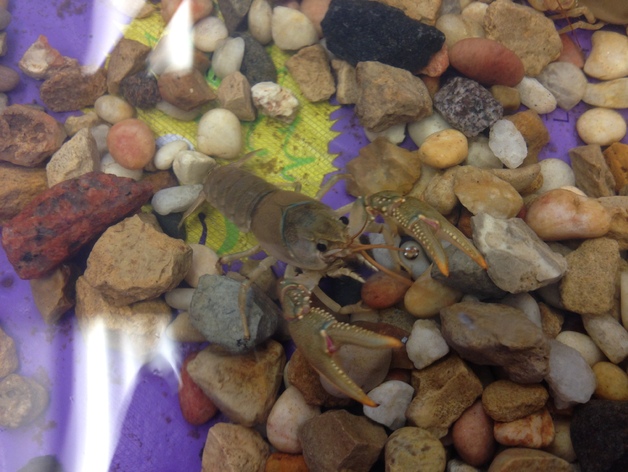
Crayfish
thingiverse
There are many parts to crayfish that enable them to move and thrive in their environment. This lesson will guide learners in identifying and understanding the functions of these crucial parts. Printer Settings Printer Brand: MakerBot Printer: MakerBot Replicator (5th Generation) Rafts: Doesn't Matter Supports: No Custom Section Project: Crazy Crayfish Objectives: There are many parts to crayfish that enable them to move and thrive in their environment. This lesson will guide learners in identifying and understanding the functions of these crucial parts. Audiences: I recommend 3rd-grade students, as this lesson ties well into Next Gen Science standards. Subjects: STEM, Science Skills Learned (Standards): Grade 3: Science: 3-LS1-1. Learners develop models to describe life cycles and commonalities among organisms. 3-LS3-2. Students use evidence to support explanations of trait influences from the environment. 3-LS4-3. Construct an argument with evidence that some organisms thrive in certain habitats, while others struggle or perish. 3-LS3-1. Analyze and interpret data on inherited traits and variations among similar organisms. Lesson/Activity: Part one: Students examine a model of a crayfish, recognize parts, sketch the crayfish, label parts, and predict functions. Part 2: Show students the model again, label parts with them, discuss uses using diagrams, and complete a chart about parts and their uses. (Use this same activity at the end of the unit for a quiz.) Here is the link to the worksheet https://docs.google.com/document/d/1z3eTX1iGS8_gKSvKR3fj4IyvfzWKHYuvWCIS1sUl7D8/edit?usp=sharing Part 3: Have students observe live crayfish, help set up its habitat, and discuss differences in what crayfish eat in captivity versus the wild. Discussion questions: Is there a preferred location for the crayfish? How does a crayfish protect itself? How do you know? What happens when you feed the crayfish? How does a crayfish breathe? How do you know? What do you notice about the clarity of the water? Part 4: Have students complete the crayfish journal in notebooks or smaller stapled books. There is a rubric/word bank located here.https://docs.google.com/document/d/14bzm-LwltgZa9gMS7JrmSk1JCTqOur_jq8dPeG26CL0/edit?usp=sharing Duration: Part one and two each take a day lesson. Part 3 is best when students can observe the crayfish over time. Part 4 can be done simultaneously with part 3 or given a week to write as an end-of-unit assessment. Possible Extensions: Experiment with the crayfish habitat using man-made objects. Predict where the crayfish will want to spend most of its time, then graph which location it is in at various times throughout the school day. Preparation: Print 2-3 models of the crayfish for students to examine better. Students need their science journal and a copy of the crayfish worksheet (front being the diagram and back being the function sheet). For parts 3 and 4, you will need live crayfish. We order ours from Carolina Biological. They live in our classrooms in kiddie pools with one air pump, separated into 4 quadrants - small rocks, large rocks, white rocks, and nothing. Make sure to wash the rocks well before putting them in the pool for the crayfish.
With this file you will be able to print Crayfish with your 3D printer. Click on the button and save the file on your computer to work, edit or customize your design. You can also find more 3D designs for printers on Crayfish.
